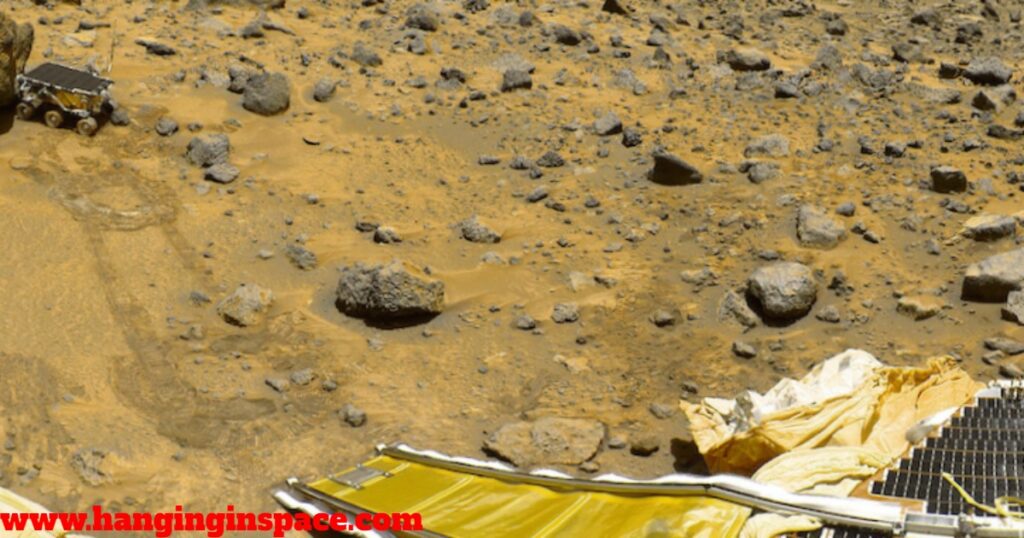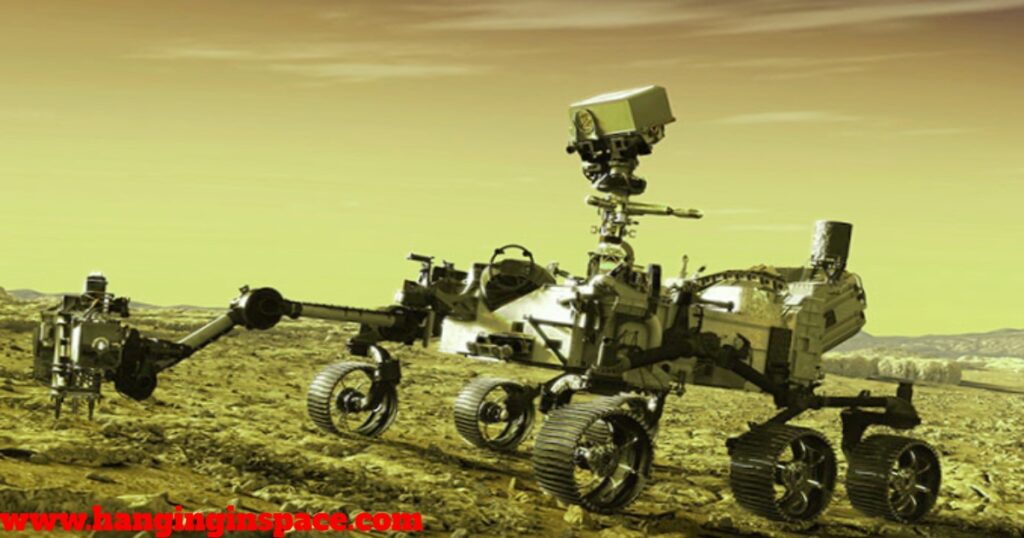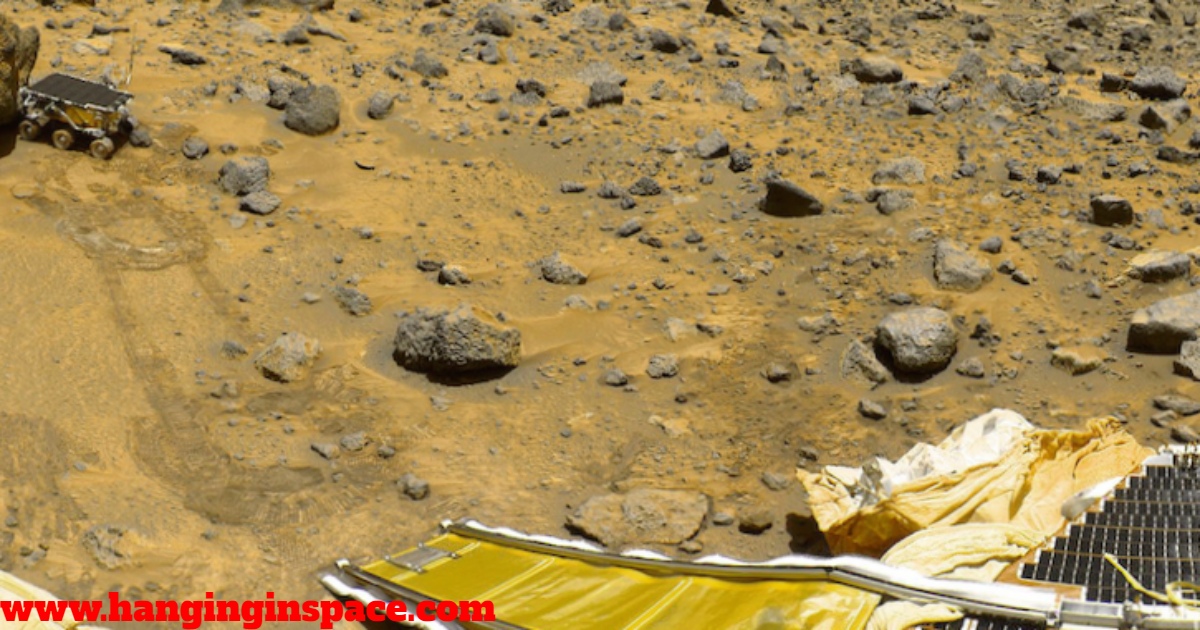The Mars Exploration offers unique opportunities for scientific discovery, technological innovation, and inspiration. Mars research gives insights into the possibility of life beyond Earth, planetary evolution, and the obstacles to human exploration beyond our home planet.
The first steps in the exploration of Mars were modest. Early telescopic views revealed surface characteristics that suggested the world may be dynamic and comparable to Earth. In the 1960s and 1970s, flyby missions were the first robotic missions to take close-up photos of Mars. These flyby missions verified the existence of a cratered surface and a thin atmosphere.

Mars Exploration Missions:
We will discuss some important Mars Missions: Early Flyby, Orbiters & Landers, Rovers, and Future Missions.
1. Early Flyby Missions:
Mariner 4 (1964):
This NASA mission provided the first close-up images of Mars, revealing a cratered landscape with no signs of life.
Mariner 6 & 7 (1969):
These flyby missions mapped nearly two-thirds of the Martian surface, sending back high-resolution images and revealing more details about the planet’s atmosphere.
2. Orbiters and Landers:
Mars Viking 1 & 2 (1976):
In 1976, a major breakthrough was made when Viking Missions became the first missions to land on the surface of Mars. These robotic landers conducted the initial on-site tests. Despite their inability to locate solid proof of life, the Viking missions discovered a strikingly arid and frigid world with a complex geological history.
These missions included orbiters and landers that performed the first searches for life on Mars. While they didn’t find conclusive evidence, they did return valuable data about the Martian atmosphere and surface composition.
Mars Pathfinder & Sojourner Rover (1996):
This mission delivered the Sojourner rover, the first wheeled exploration vehicle on Mars, to the planet’s surface. Sojourner roamed the landing site for 83 days, sending back data and images.
Mars Global Surveyor (1996-2006):
This orbiter mapped the entire surface of Mars in high detail and studied the Martian atmosphere and climate.
Mars Odyssey (2001-Present):
This orbiter is still operational, studying the Martian radiation environment, composition, and climate. It also functions as a communication relay for rovers on the surface.
Mars Express (2003-Present):
This European Space Agency (ESA) orbiter has been studying the Martian atmosphere, surface composition, and potential for past water activity.
Mars Reconnaissance Orbiter (2005-Present):
This powerful orbiter has been capturing high-resolution images of Mars, providing detailed information about the Martian surface geology and potential landing sites for future missions.
3. Mars Rovers:
Spirit & Opportunity (2004-2010, 2018):
This intrepid robotic duo landed on Mars in 2004, embarking on Mars exploration missions originally planned for just 90 days. They far exceeded expectations. They provided years of invaluable data about the Martian surface. Spirit explored Gusev Crater, searching for evidence of past water activity. Opportunity, at Meridiani Planum, discovered strong evidence of a past watery environment, including hematite, a mineral that typically forms in water.
Curiosity Rover (2012-Present):
The larger and more advanced Curiosity rover for Mars exploration landed in Gale Crater in 2012 and is still operational today. Curiosity has been investigating Martian geology, searching for potential habitats for past life, and studying the Martian climate. It has drilled into rocks, analyzed Martian soil, and even detected organic molecules, the building blocks of life, on Mars.
Perseverance Rover (2021-Present):
The newest robotic explorer for Mars exploration, Perseverance, touched down on Jezero Crater in 2021. This rover is specifically designed to search for signs of ancient microbial life. It collects rock samples that will be stored in a cache for a future mission to return to Earth. Perseverance is also paving the way for future human exploration by testing technologies needed for in-situ resource utilization, or producing oxygen and other resources from materials found on Mars.

4. Future Missions:
SpaceX Starship Mission:
SpaceX‘s ambitious Mars exploration mission has the ultimate goal of establishing a human colony on the Red Planet. Their plans involve a fully reusable launch system called Starship, a massive spacecraft that will be powered by the Super Heavy booster for liftoff from Earth. Starship would be refueled in Earth’s orbit by tanker missions before embarking on its months-long journey to Mars.
The initial Mars exploration crewed missions would focus on establishing a basic human presence on Mars, likely involving a small team of astronauts. They would lay the groundwork for building a permanent base capable of supporting future colonists, with the ultimate goal of creating a self-sustaining Martian colony. SpaceX is still in the development phase, but its Starship prototypes have conducted successful high-altitude test flights. SpaceX is playing an important role in Mars exploration.
New Era of Exploration:
From Flyby Missions to Mars Rovers, we’re successfully exploring Mars. Strong evidence of a wet past is one of the most important findings of Mars exploration missions. Large lakes, deltas, and old riverbeds indicate that Mars used to be a considerably wetter planet. This notion is further supported by the existence of water ice, possibly subterranean as well as in the polar ice caps. This prehistoric water would have been very important in forming the Martian surface and possibly creating environments conducive to life.
What is the Importance of Mars Exploration?
Investigating Planetary Evolution:
Mars exploration can give us clues about how planets evolve. By studying its geology and composition, we can gain insights into the formation and early history of our solar system, including Earth itself. Mars may have started with a thicker atmosphere and more water, raising questions about what caused these changes and how they might relate to Earth’s own climate history.
The Search for Past or Present Life:
Mars may have held liquid water billions of years ago, and some regions might still have sub-surface water ice. This watery past, along with potential geothermal vents, makes Mars a prime target in the search for evidence of past or even present microbial life. Understanding if life ever arose on Mars would not only answer a fundamental question about the universe‘s potential for life but could also offer clues about the possibility of life existing elsewhere.
Understanding Climate Change:
Studying the Martian climate, past and present, can offer valuable insights into Earth’s own climate. By comparing the two planets, we can gain a better understanding of the factors that influence planetary climate and the potential consequences of climate change on Earth.
Resource Potential:
Mars may hold valuable resources like water ice, which could be essential for future human missions. The presence of water ice would not only provide a source of drinking water for astronauts but could also be broken down into hydrogen and oxygen, usable for fuel and life support. Additionally, Mars may have other resources like metals and minerals that could be crucial for establishing a sustainable human presence on the planet.
Technological Advancement:
Mars exploration pushes the boundaries of technology, leading to innovations that benefit us on Earth. From developing new materials and propulsion systems to creating advanced robotics and life support technologies, the challenges of exploring Mars drive progress in countless fields.
Humanity’s Future:
Mars exploration is a step for venturing farther into the solar system and perhaps one day, becoming a multi-planetary species. By learning to live and work on Mars, we develop the technologies and gain the experience necessary to explore the wider universe.
Conclusion:
The exploration of Mars represents a remarkable endeavor that has provided invaluable insights into the planet’s geological history, potential for past or present life, and prospects for future human exploration. Through robotic missions and scientific research, we have gained a deeper understanding of Mars’ surface features, atmosphere, and climate, paving the way for future missions aimed at uncovering even more secrets of the Red Planet.
